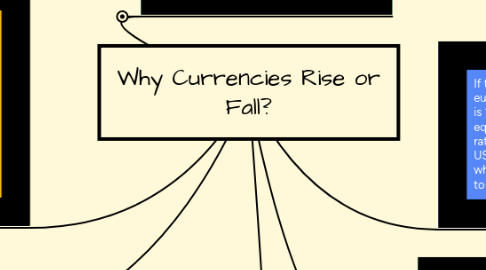Why Currencies Rise or Fall?
by Eduardo Josue Sanchez


1. The price of a currency is established, as in any other market, by the meeting of the supply and demand of currencies
1.1. Maths
1.1.1. Text book, exercises 34, 35, 36, 37
2. The settlement time for currency transactions can be: 2 Spot exchange rate: the spot exchange rate refers to the current exchange rate, that is, transactions carried out in cash. Future exchange rate: the future exchange rate indicates the price of the currency in operations carried out in the present, but whose settlement date is in the future, for example, within 180 days.
2.1. Physics
2.1.1. Research and prepare experiment
3. Fixed exchange rate: it is rigidly determined by the central bank.
4. Flexible exchange rate: it is determined in a free market, by the supply and demand of foreign exchange. In economies with a flexible exchange rate, balance of payments imbalances are automatically corrected for exchange rate depreciation or appreciation.
5. If the exchange rate between the euro and the US dollar (USD / EUR) is 1.12, this means that the euro is equal to 1.12 dollars. Similarly, if the rate is calculated in reverse (EUR / USD), this results in a rate of 0.89, which means that the dollar is equal to 0.89 euros.
5.1. English
5.1.1. Text book p. 55-60
5.1.2. Joseph Conrad "Heart of Darkness"
